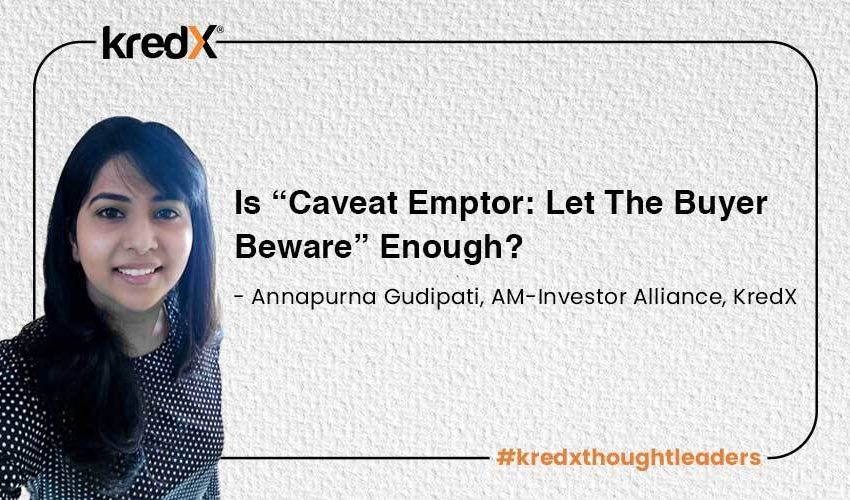
Caveat Emptor ‘Let The Buyer Beware’ Doesn’t Protect Investors
Is “Let the buyer beware” enough for investors? In light of the same, we spoke to Annapurna Gudipati, AM-Investor Alliance, KredX, about how investors should be cautious at every step to ensure better decision-making.
Understanding Caveat Emptor
Caveat emptor is a neo-Latin phrase that can roughly be translated in English to “let the buyer beware.” While the phrase is sometimes used as a proverb in English, it is mainly used in legal contracts as a type of disclaimer. In many jurisdictions, it is the contract law principle applicable to the buyer to perform due diligence before making a purchase.
Understanding Caveat Emptor:
The phrase explains that the seller has more information than the buyer about the quality of the product. Caveat Emptor was introduced to resolve disputes that arose from off-balanced information.
The importance of Caveat Emptor is paramount as it helps both the parties, i.e. seller and buyer, during a purchase. “Let the buyer be aware” is an inadequate warning to investors as it makes them invest under specific agreed terms of any contract between two parties.
The primary hypothesis is that the buyer buys at his own risk; therefore, they should examine and then accept it while purchasing it, with or without defects.
How KredX Serves Differently?
People usually ask me how different KredX is from others and how much safer it is. At KredX, we follow “sold as is”, which means investors know the risk involved, ensuring that they are confident with the integrity of the product before making a transaction. At a service-based company like KredX, every transaction is bound by law and contract, where the investor agrees to buy it at their own risk, which excludes possibilities of fraud.
In financial services, significantly since the 2008 financial crisis, the buyer is often entitled to clear largely standardised information regarding the product. The best financial service companies, the most consumer-focused, go through considerable challenges to ensure that their customers are steered towards the best products and the most suitable ones, helping investors make better decisions.
Bottomline
Last but not least, there are times, even when this disparity is in play, there come practical reasons that suggest not to increase or decrease the contractual power of the buyer. It can be said that the rule of caveat emptor is becoming obsolete and turning to a more consumer-oriented market encouraging commercial transactions. Additionally, it can also bring an appropriate balance between the obligations and rights of the seller and the buyer.



